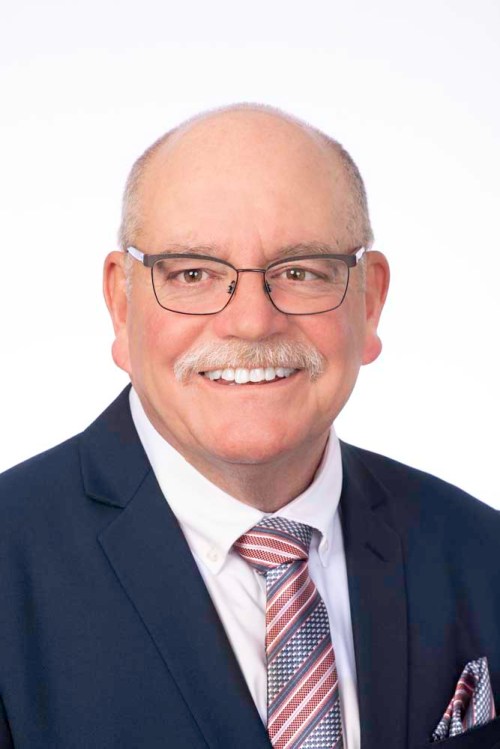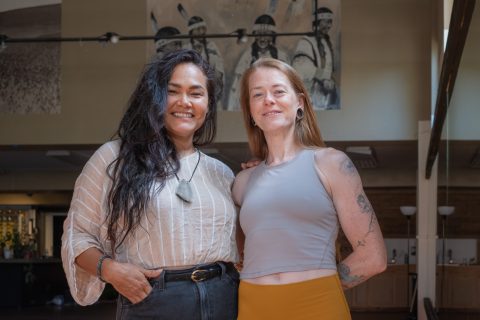County commissioner candidates dismiss systemic racism as local issue
Published 5:00 am Saturday, July 11, 2020

- Dorran
UMATILLA COUNTY — As a civil rights movement continues with protests against racism and police brutality around the nation, neither candidate vying for the open seat on the Umatilla County Board of Commissioners, both of whom are white, acknowledge that systemic racism is a local problem for people of color in the county.
When asked to weigh in on the local presence of systemic racism in the wake of recent protests, Umatilla County commissioner candidates HollyJo Beers and Dan Dorran provided differing prospectives.
Trending
Zaira Sanchez, census equity coordinator for Hermiston-based Latino advocacy group Raices, highlighted that the COVID-19 pandemic has served as a grim example of the inherent inequalities that exist.
According to data on 650,000 of the United States’ COVID-19 cases from the Centers for Disease Control and Prevention that the New York Times reported on July 5, Black and Latino people have been three times as likely to contract the virus and nearly twice as likely to die from it in comparison to white people in the United States.
While that CDC data only includes information on 82 cases reported in Umatilla County as of May 28, 63 of those cases were Hispanic or Latino people and 19 were white. Those numbers would mean Latino and Hispanic residents of Umatilla County, which account for roughly 27% of the population, accounted for nearly 77% of the county’s cases at the time.
“Systemic racism in our county is real,” Sanchez said. “It’s unequal access to the safeguards to protect our people. If our people don’t have access to basic human rights that white people, American citizens have, then that’s systemic racism.”
Umatilla County Commissioner George Murdock acknowledged these disparities in a July 8 interview with Oregon Public Broadcasting, during which he stated local migrant workers are at greater risk of exposure because they are often living in “dormitory-like situations” and traveling to work in tightly packed vans.
Hermiston City Councilor Roy Barron, who is also the community partnership liaison for Raices, pointed out that these disparities in living conditions and wealth that put people of color at greater risk of the virus are a result of systemic inequalities — inequalities that are derived from a history of housing discrimination against people of color and land ownership restrictions that limited people of color’s ability to pass wealth down to future generations.
Trending
But when asked directly whether systemic racism exists in Umatilla County during a June 30 interview with the East Oregonian, Beers said she felt the biggest issues with local racism stem from the CTUIR.
“A lot of people will say it does. I think the obvious population here is the tribes. The tribes are the most racist people I’ve ever encountered,” Beers said. “The racism goes both ways.”
Beers claims the CTUIR is racist toward white residents through preferential hiring at its workplaces by choosing tribal members over “more qualified” applicants. While she said she doesn’t think all tribal members are personally racist, she believes there’s a general prejudice against white residents because of the historical injustices the American government perpetrated against indigenous communities.
“There’s many of them out there that are very prejudiced and still cling to the ‘white man screwed us over’ type deal, and it’s the same with slavery. None of us have owned slaves here that live today and we didn’t cause them all that,” she said.
“And it’s the same thing with the Native Americans. We’re not the ones that did that to you. So people need to get over it and move on. They’re being prosperous. They’re looked up to for what they’ve done. And they need to leave that negative behind.”
Chuck Sams, spokesman for the CTUIR, said Beers’ comments showed a “shock of ignorance” and were “extremely disappointing.”
Sams noted that Beers is a member of the Oregon Three Percenters and considers herself a constitutionalist, but she was seemingly unaware that the issue of tribal preference had already passed constitutional muster.
In the 1974 case Morton v. Mancari, a group of Indian employees at the Bureau of Indian Affairs legally challenged the bureau’s Native American hiring preference on the grounds that it was a violation of the Equal Employment Opportunity Act of 1972.
The U.S. Supreme Court upheld the hiring preference, arguing that a hiring preference for American Indians wasn’t a matter of race.
“The preference, as applied, is granted to Indians not as a discrete racial group, but, rather, as members of quasi-sovereign tribal entities whose lives and activities are governed by the BIA in a unique fashion,” Justice Harry Blackmun wrote in the unanimous decision.
Despite the tribes’ hiring policy, Sams said 64% of the CTUIR’s workforce are non-Indian. A 2018 report found that an overwhelming majority of workers at tribal enterprises, such as Wildhorse Resort and Casino and Cayuse Technologies, are non-Indians, while CTUIR members and other Native Americans only hold a slight lead on non-Indians working in tribal government.
Additionally, Sams said the tribes don’t consider using tribal preference unless an applicant meets the minimum qualifications for the job.
Responding to Beers’ “tribes are the most racist people I’ve ever encountered,” Sams suggested she brush up on Oregon’s early history as a territory and state.
In 1844, the Provisional Government of Oregon passed a law that allowed settlers to whip Black residents twice per year until they left the territory.
When Oregon became a state in 1859, the state constitution specifically banned Black people from living in the state. The law was repealed in 1926, but the language remained in the state constitution until 2001.
“I don’t want to offend (the CTUIR) because they would consider me racist,” Beers said. “I don’t want to be considered racist by anybody. I’m trying to state a fact, but they won’t take it that way. But there is racism out there, there most definitely is racism out there.”
Despite living on sovereign land, Sams said tribal members living on the Umatilla Indian Reservation are county voters and constituents.
Sams said past candidates for county commissioner typically meet with tribal members to understand the issues important to them, but to his knowledge, Beers hasn’t met formally with the tribes.
Beers stated in a July 10 email that she has spoken with some tribal leaders and has “definite plans” to talk with other tribal government entities soon.
When Dorran, who is running against Beers in the upcoming November election, was similarly asked about the presence of systemic racism in Umatilla County on July 8, he claimed it was difficult to understand what exactly “systemic” is today.
“I need a solid definition of what systemic and institutionalized mean nowadays because if you go to Webster’s dictionary and the definitions that I grew up with, that would mean that systemically every policeman in Umatilla County has problems with race,” he said. “I definitely and uninhibitedly don’t agree with that.”
While admitting he may not know the proper context of what “systemic” and “institutionalized” mean in regard to racism in 2020, Dorran was still confident enough to dismiss its existence locally.
“So, if you’re asking me in Umatilla County do I think there’s systemic and institutionalized racism? Absolutely not,” he said. “Is there room for dialogue? Sure. There’s always room for dialogue and listening, and that’s exactly how you grow.”
Barron agrees that dialogue on these issues of race and inequality is an important step for the community. But recent examples, like the sitting commissioners declaring their support for all police and condemning the national protest movement as “disrespectful,” showed that local leadership has even failed in that step.
“I didn’t see an effort to try and reach out and understand the issues,” he said. “That’s where my disappointment was at.”
Instead, Sanchez said statements that have been made by the county’s elected officials and candidates running for office have largely ignored the lived experiences of Black, indigenous and people of color in the county.
“It’s sad to see that when we try to explain to folks why these statements are hurtful and why they make us feel invisible, it just gets dismissed and they just get defensive,” Sanchez said.
Barron stressed that just because there’s systemic racism in the county isn’t an indictment of all of its white residents as being “bad” or to blame for those inequalities, but it does mean that they need to be acknowledged and addressed.
“What’s important is to listen,” Barron said. “Of course there’s emotion, but behind the emotion is a message. And the message is we haven’t been treated well.”









